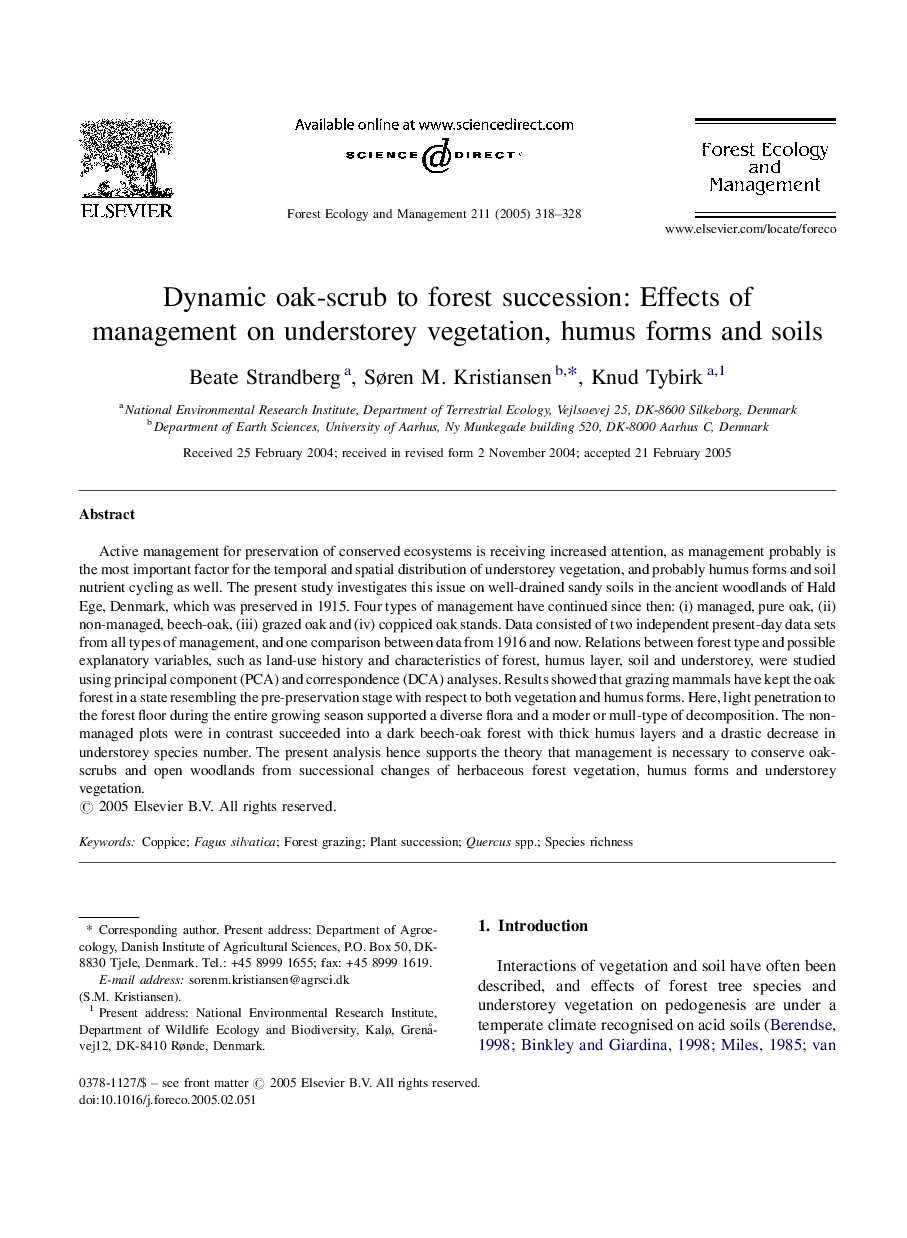| Article ID | Journal | Published Year | Pages | File Type |
|---|---|---|---|---|
| 10250631 | Forest Ecology and Management | 2005 | 11 Pages |
Abstract
Active management for preservation of conserved ecosystems is receiving increased attention, as management probably is the most important factor for the temporal and spatial distribution of understorey vegetation, and probably humus forms and soil nutrient cycling as well. The present study investigates this issue on well-drained sandy soils in the ancient woodlands of Hald Ege, Denmark, which was preserved in 1915. Four types of management have continued since then: (i) managed, pure oak, (ii) non-managed, beech-oak, (iii) grazed oak and (iv) coppiced oak stands. Data consisted of two independent present-day data sets from all types of management, and one comparison between data from 1916 and now. Relations between forest type and possible explanatory variables, such as land-use history and characteristics of forest, humus layer, soil and understorey, were studied using principal component (PCA) and correspondence (DCA) analyses. Results showed that grazing mammals have kept the oak forest in a state resembling the pre-preservation stage with respect to both vegetation and humus forms. Here, light penetration to the forest floor during the entire growing season supported a diverse flora and a moder or mull-type of decomposition. The non-managed plots were in contrast succeeded into a dark beech-oak forest with thick humus layers and a drastic decrease in understorey species number. The present analysis hence supports the theory that management is necessary to conserve oak-scrubs and open woodlands from successional changes of herbaceous forest vegetation, humus forms and understorey vegetation.
Related Topics
Life Sciences
Agricultural and Biological Sciences
Ecology, Evolution, Behavior and Systematics
Authors
Beate Strandberg, Søren M. Kristiansen, Knud Tybirk,
